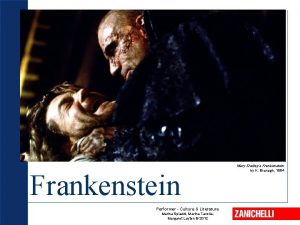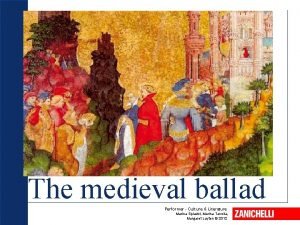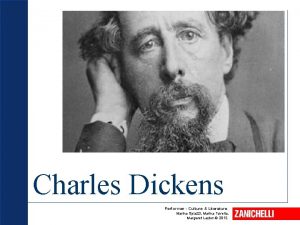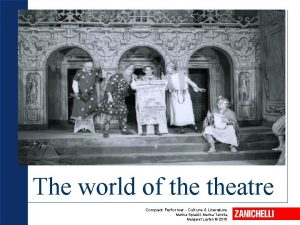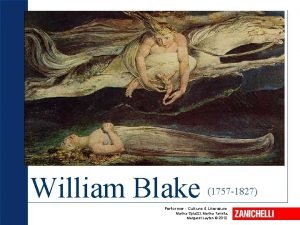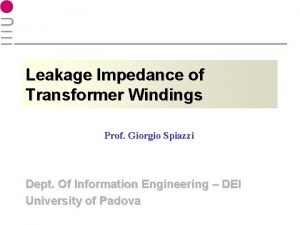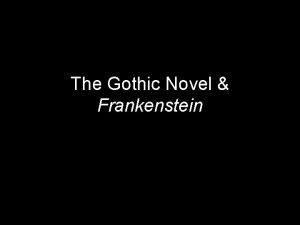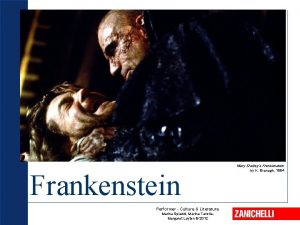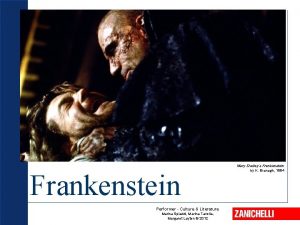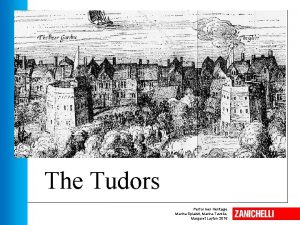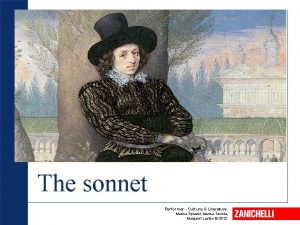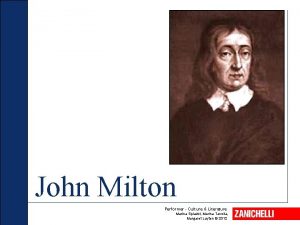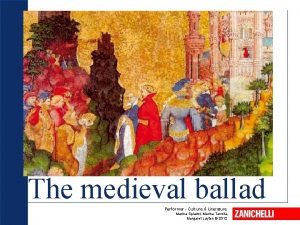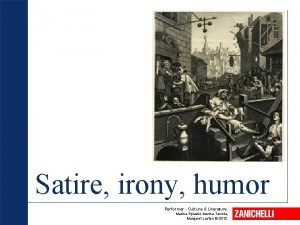Frankenstein Performer Culture Literature Marina Spiazzi Marina Tavella












- Slides: 12

Frankenstein Performer - Culture & Literature Marina Spiazzi, Marina Tavella, Margaret Layton © 2012 Mary Shelley’s Frankenstein by K. Branagh, 1994

Frankenstein 1. Mary Shelley’s life • The daughter of Mary Wollstonecraft and William Godwin, both believers in the Enlightened power of reason. • She eloped to France with the Romantic poet Percy B. Shelley. • The writing of Frankenstein took place at Villa Diodati on the banks of Lake Geneva. Performer - Culture&Literature

Frankenstein 2. Frankenstein and its plot • Frankenstein, a Swiss scientist, creates a human being by joining parts of corpses. • The result of the experiment is ugly and revolting. • The monster becomes a murderer. • At the end he destroys his creator. • The story is introduced by a series of letters written by Walton, a young explorer on an expedition voyage to the North Pole, to his sister, Margaret Walton Saville. Performer - Culture&Literature

Frankenstein 3. The influence of science The latest scientific theories of chemistry and electricity influenced Mary Shelley The protagonist of Frankenstein is the first embodiment of theme of science Performer - Culture&Literature He creates a human being through the use of electricity and chemistry

Frankenstein 4. Influences: from Prometheus to Frankenstein • The myth of Prometheus Frankenstein is an example of overreacher. • Rousseau The monster is a noble savage. Poster for the 1931 film ‘Frankenstein’ directed by James Whale. Performer - Culture&Literature

Frankenstein 4. Influences: from Prometheus to Frankenstein • Locke The monster’s selfawareness and his education. • S. T. Coleridge’s The Rime of the Ancient Mariner Both the novel and the poem are stories of a crime against nature. • Gothic stories read by Mary and Percy B. Shelley. Boris Karloff as Frankenstein’s monster in James Whale’s 1931 film. Performer - Culture&Literature

Frankenstein 5. Narrative structure: an epistolary novel Walton’s narration to his sister Margaret Walton Saville (chapters 1 -10) Frankenstein’s narration to Walton (chapters 11 -17) The monster’s narration to Frankenstein (chapters 18 -24) Performer - Culture&Literature

Frankenstein 6. Main characters • Both Captain Walton and Doctor Frankenstein tried to go beyond human limits. • The monster is complementary to his creator: they both suffer from isolation and they both begin with a desire to be good. Black and white poster for James Whale’s 1931 film ‘Frankenstein’. Performer - Culture&Literature

Frankenstein 7. Themes • The quest forbidden knowledge (Walton and Dr Frankenstein) is related to theme of the overreacher. • The double Dr Frankenstein and the monster. • The overcoming of natural and divine rules the creation of a human being without the participation of a woman. • Social prejudices the monster as an outcast. • Education and experience the monster’s intellectual and emotional development. Performer - Culture&Literature

William Blake (1757 -1827) 8. Frankenstein on the screen A being created by man Boris Karloff in Frankenstein by James Whale, 1931 Performer - Culture&Literature Robert De Niro in Mary Shelley’s Frankenstein by Kenneth Branagh, 1994

Frankenstein 9. Frankenstein and cloning • Cloning is the creation of an organism that is an exact genetic copy of another. This means that every single bit of DNA is the same between the two. • Can you consider the monster a sort of a clone? Performer - Culture&Literature

Frankenstein 10. Cloning steps The first transgenic mouse was born 1952 1982 First nuclear transposition of the nucleus of a frog embryo cell 1984 1996 ‘Embryo splitting’ technique is discovered: from a single embryo, 5 identical sheep were obtained Performer - Culture&Literature European Parliament voted against therapeutic cloning Sheep Dolly was born 1998 2000 2001 Thomson found out embryo stem cells Scientists discovered stem cells inside placenta and amniotic fluid able to give rise to specialised cells 2007 The Advanced Cell Technology announced its success in cloning a human embryo
 Performer heritage frankenstein
Performer heritage frankenstein The medieval ballad
The medieval ballad Sonnet examples by students about family
Sonnet examples by students about family Marina spiazzi
Marina spiazzi Performer culture and literature 3
Performer culture and literature 3 Performer culture and literature 3
Performer culture and literature 3 Performer culture and literature 3
Performer culture and literature 3 Giorgio spiazzi
Giorgio spiazzi Giorgio spiazzi
Giorgio spiazzi Gothic literature elements
Gothic literature elements Anaerobic culture method
Anaerobic culture method Stroke culture method
Stroke culture method Indole test
Indole test
